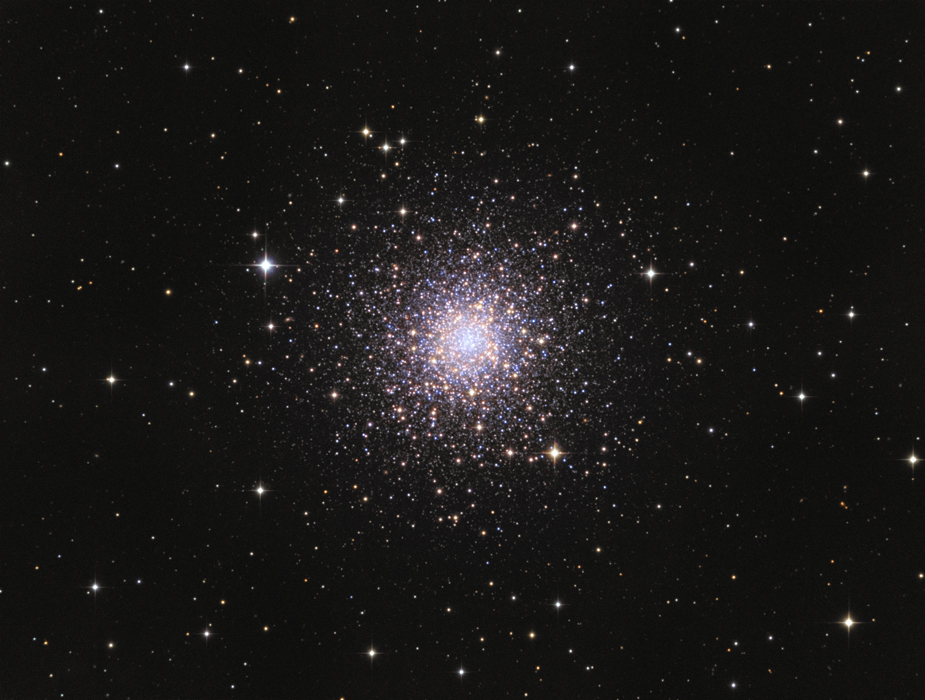M3 (NGC 5272)
Characteristics:
Distance: 33,900 light years
RA: 13h 42m 09s
Dec: +28 degrees 22' 09"
PA: plus 90 degrees
Description:
M3 is one of the most beautiful and extensively studied globulars in
the northern hemisphere. Like the majority of globular clusters,
most of the stars in M3 are old and metal poor (representing some of
the earliest stars formed in the galaxy, at a time when supernovae
explosions were not common enough to give rise to heavier elements like
iron, oxygen, silicon etc. that became incorporated into later, metal
rich stars). The Hertzsprung-Russell
diagram of M3 (found half way down the page) shows that most of its
stars have left the main sequence and are either red giants or bluer
horizontal branch stars (the latter mostly comprised of stars that are
burning helium to carbon in their cores). For anyone interested
in learning more about HR diagrams, I described this in greater detail
5 years ago when I took a rather modest image
of M13.
The interesting feature of M3 that was most impressive while processing
this image is the abundance of blue stars, due to hot stars on the horizontal branch
of the HR diagram, as well as stars called "blue stragglers"
(because they are still on the main sequence when they should have long
since moved on to become red giants). The mechanism by which blue
stragglers are formed is thought to involve interaction with other
stars, especially those in the dense central portion of the cluster,
during which hydrogen is replenished and the star can continue to burn
hydrogen to helium long after other stars have left the main sequence.
Another source of blue stars are the RR Lyrae variables, which are very
abundant in M3. These stars have shorter periods then Cepheids
and have a relatively consistent absolute magnitude in the range of
0.75. This means that once you identify a star as an RR Lyrae
class variable, and once you determine its average relative magnitude
from its light curve, you can calculate the distance to the
cluster. I illustrate this principle using the above image here.
A nice description of M3 may be found on Rob Gendler's
website.
Photographic
Details:
Date: April 11, 2010
Scope: Vixen VC200L at f6.4 on the
Takahashi NJP
Mount
Autoguider: SBIG ST-402
Camera: ST8300 -20C
Filters: Astronomik
Clear (unblocked), R, G, B filters
Exposures: Clear- 60 x 2' =
120'; R- 10 x 7'; G- 6 x 10'; B-
6 x 15'. Total exposure 5.7
hours
Post-processing:
Calibrated in Maxim, aligned and
stacked using DeepSkyStacker, followed
by DDP
in ImagesPlus (IP). Further processing in Photoshop CS4.
Please
note: Graphics on this website may not be reproduced without
author permission.
Back to Star
Clusters
Home
